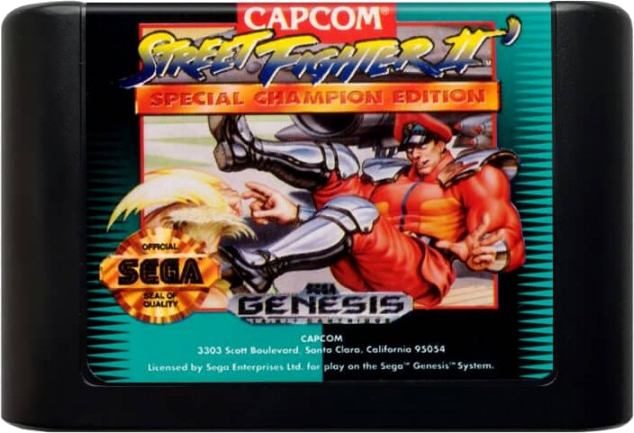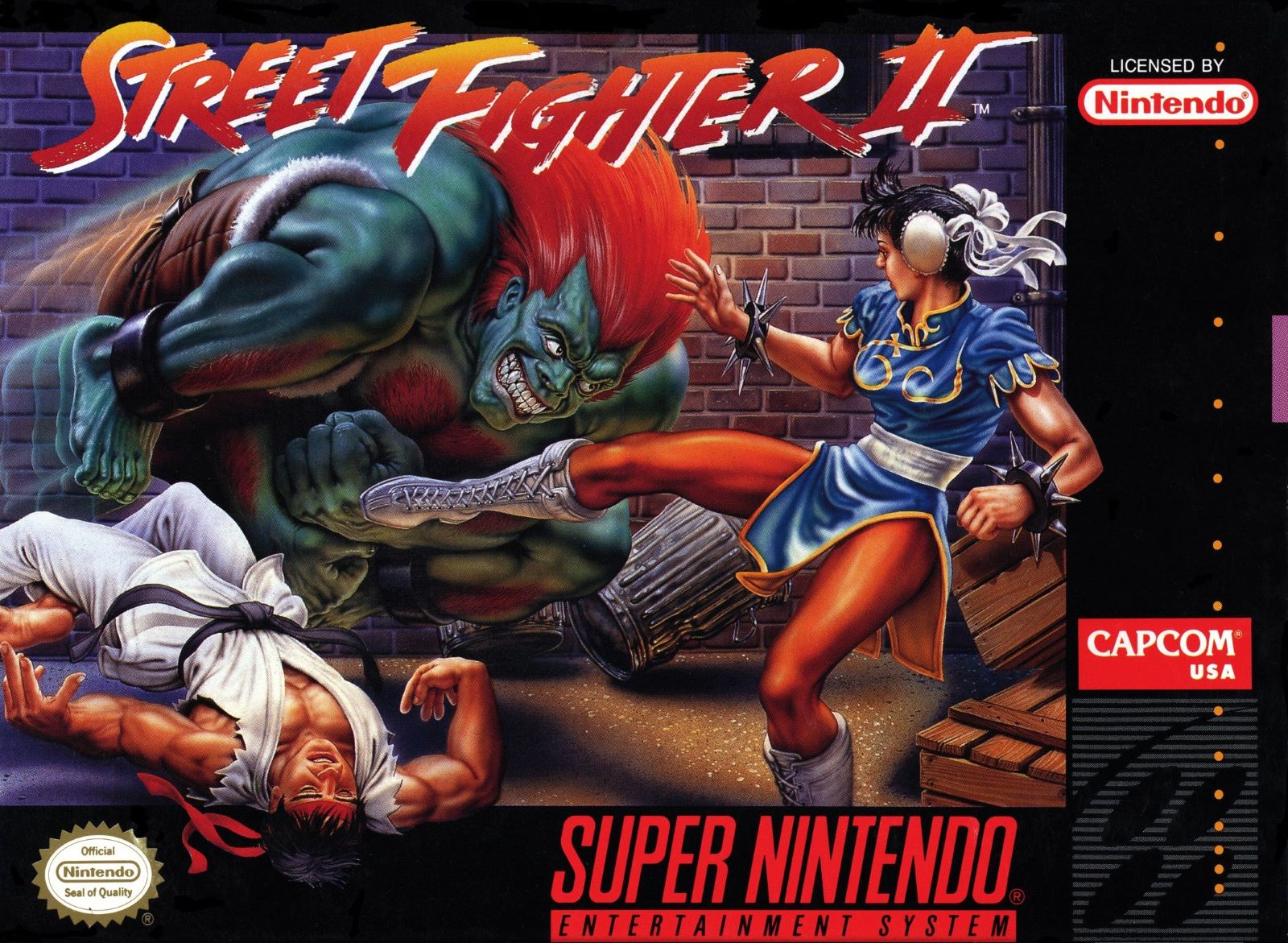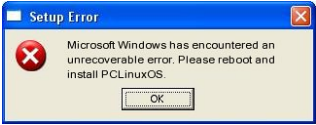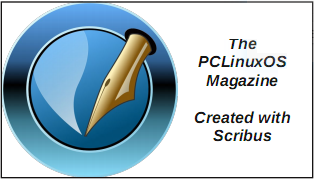| Previous
Page |
PCLinuxOS
Magazine |
PCLinuxOS |
Article List |
Disclaimer |
Next Page |
Street Fighter Remastered on PCLinuxOS |
|
by Alessandro Ebersol (Agent Smith)  After almost 30 years (27 to be exact), a game is modified to work as it should, on the date it was released. Street Fighter 2 Remastered is a hack for the Megadrive/Genesis game, which was released on September 28, 1993 in Japan, on September 27 in the USA and October 29 in Europe.  The cartridge, US version However, even when it was released, there was criticism of the final product, which was made by Capcom itself, in house. But the product that hit stores in 93 was not Capcom's first Street Fighter product for Megadrive. In fact, it was the second, and even so, its production was quite tumultuous. Now, let's take a walk down memory lane, back to the 90s, to understand why the cartridge for Megadrive came out as an inferior version. The 1990s witnessed an unprecedented war Yes, those were the years of the famous console wars, the war of video games, where companies like Sega and Nintendo fought for market shares. And each small victory meant a lot, since the video game market, in the 90s, had already surpassed the traditional entertainment market, such as cinema and music. At that time, Nintendo reigned supreme, in the 8-bit market, both in Japan and in the USA, which forced Sega to take the next step in the evolution of video games: launching a 16-bit machine, which would be better to port its arcade hits (arcade), and, would give a competitive technological advantage over rival Nintendo. However, Nintendo did not sleep in its glories, and was famous for forcing draconian contracts with its licensed partner companies. Aiming to throw rocks at its rivals' paths, Nintendo signed an exclusive contract with Capcom, yes, that Capcom from Street Fighter II. With this contract, Capcom could not port any of its original games to any other console from other manufacturers. But it could license them to other companies, and it did so with Sega itself, which bought the rights to Strider and Ghouls' N 'Ghosts, and created versions for the Megadrive. The versions were great, and did not compromise Capcom's relationship with Nintendo. But, all of that would change in 1992, with Street Fighter II.In 1991, Street Fighter II revived the arcades Street Fighter II was responsible for revitalizing the arcade video game industry in the early 1990s, to a level of popularity not seen since the days of Pac-Man, in the early 1980s. Yes, the arcades were stagnant and had lost public interest. However, SF2 rekindled the passion for arcades: it sold more than 60,000 arcade machines, each costing around US $1,300. Counting all the elapsed time, it is estimated that the game has earned more than 1 billion and 300 thousand dollars, only on SF2 arcade machines. And, of course, Capcom would profit much more with the upgrade, Street Fighter II: Champion Edition, which would sell more than 140,000 machines.  Street Fighter II: The World Warrior was the title that drove the success of the SNES at launch And, the whole success of SF2 coincided with the launch of the Super Nintendo. As Nintendo had an exclusive contract with Capcom, the timing was perfect for the newly launched big N console: The original Street Fighter II SNES version was the company's best-selling individual game software, with over 6.3 million units sold, and remains its best-selling game software on a single platform to the present day. SNES was launched in the US in August 1991, and SF2 was launched for the platform in July 92, which boosted console sales and helped cement it to a prominent position in the console wars, despite the Megadrive being already in the market for two years, with a considerable library. Welcome to the next level With the revival of arcades and the boost SF2 gave SNES, the market for 1-on-1 fighting games was on fire. So much so that many games emerged because of SF2, the most obvious was Mortal Kombat, followed by many others, such as Killer Instinct, Art of Fighting, World Heroes and etc...  Sega's slogan, circa 1993 But, with the fierce battle of the consoles, the old Nintendo rules, from the time of the NES 8 bits, were no longer valid. Nintendo had strict rules with its licensees: each third-party developer could only release up to five games a year (but some third parties worked around it using different names, like Konami's "Ultra Games" brand), these games could not be released on another console within two years, and Nintendo was the exclusive manufacturer and supplier of the NES cartridges. In 1991, Acclaim began releasing games for both platforms, with most of Nintendo's other licensees following suit over the next few years. Capcom was very reluctant about this, but it did license some games to Sega (as mentioned above). Sega, eyeing to get a slice of that market, started to negotiate aggressively with Capcom, to have a Street Fighter II for its platform. Negotiations with Sega regarding bringing Street Fighter II to the Sega Mega Drive started around the 1992 Summer Consumer Electronic Show. Capcom in Japan was understandably against the idea of going against its relationship with Nintendo and was reluctant to work with Sega because of that. Sega Does What Nintendon't However, a deal was settled and Sega was going to receive its Street Fighter II. Not only would Sega receive Street Fighter II, Capcom would now become one of Sega's official third-party licensees. To sweeten the deal, Capcom offered to port the then recently launched Champion Edition, which was a rebalanced version of Street Fighter II that allowed the player to play as the four "boss" characters that had not been released on any console before, and were a significant improvement over the Nintendo port. Capcom found a way around the deal with Nintendo: It would bring a different version of the game it made for Nintendo.  The first prototype of Street Fighter 2 for the Megadrive As Capcom was not prepared to handle the development of the Mega Drive, they decided to outsource this port to an unknown third-party software company under Capcom's supervision. The development of the port of the game began shortly after the deal was struck in 1992. Both Capcom and Sega were very sensitive about the port's production, as well as the business itself. Given the rumors cited directly by Sega at the time, the game would be actually developed, completed and tested before that year's holiday season. There were also rumors that Sega was intentionally fueling rumors about the possibility of the game appearing on a Sega console in an effort to slow Nintendo's console sales and boost its own. In the fall of that year, rumors began to spread about Sega's offer of Street Fighter II, although it was never formally announced by the company itself. Many magazines were excited about the port, as the Mega Drive hardware could potentially facilitate the requirements needed to produce a very accurate port of the game. Ports on home consoles generally had to deal with the architectural limitations and differences of the hardware itself and this generally produced very different results compared to the originals. The dream of many players at that time was to have "perfect arcade versions" of high-quality, high-budget arcade games produced on much more expensive hardware. With the Zilog Z80 as a secondary processor for sound and the immensely superior Motorola 68000 CPU (which coincidentally were the same processors used on the original CP-1 System arcade board) inside the Sega Mega Drive, there was a lot of anticipation with this port. Cheap (was it?) is expensive The first mention of a potential Street Fighter II port for the Mega Drive that could be found is a brief mention in the November 1992 edition of Mean Machines Sega. Most of those early rumors were consistent in detailing three specific things about this port: first, all the rumors claimed that the game would be based on Champion Edition. Two, it would be in a 16 Mbit cartridge. And finally, a special six-button controller and an arcade controller would be produced specifically because of that port. From December 1992 to April 1993, there was a festival of rumors circulating in the publications of the time.  EGM story from May 93, with wide coverage of the Sega / Capcom partnership announcement event Some "pearls" of that time stated that "the game would be bundled with the Mega CD to boost sales, and it would be a completely new edition programmed by Capcom itself." With all the pressure around this port growing, in March 1993 there was an official announcement by the two companies. There was a public event at the Accord Sofitel hotel. At the event, Tom Kalinske, of Sega of America and Joe Morici, of Capcom USA announced Capcom's third-party licensee status. The Street Fighter II: Champion Edition port for Mega Drive was announced and a prototype of the six-button game controller was shown at the event. The June 1993 release date was announced and a 16 Mbit cartridge was announced as well. At the conference, Capcom itself brought some Street Fighter II: Champion Edition arcade cabinets and even some playable prototypes from the Mega Drive port for people to play as well. However, not everything was rosy... When evaluation copies were sent, the press reported some sound quality problems for the voice samples. But in general, many non-Japanese journalists admitted that the Champion Edition was superior compared to the SNES version. Surprisingly, Japanese journalists were more critical, but in the end they were still in favor of the new Mega Drive port (Dengeki Mega Drive in issue #3 pointed to the infamous black bars, for example). Despite everything mentioned by the media so far, it seemed that things were going well for Sega!  Black bars, a smaller frame, and the infamous Branka of the prototype Oh, well, no, because Capcom, as a great dealer it always was, after announcing the partnership with Sega, announced the 20Mbit Street Fighter II: Turbo Hyper Fighting cartridge, scheduled for launch on July 11 in Japan, just one month following the launch of Sega's Champion Edition. The Turbo Hyper Fighting version featured all the changes made in the Champion Edition, but also included the fastest game speed that became popular with an unofficial/unsupported bootleg hack, from the arcade version "Rainbow Edition", created by pirates from Taiwan. If you want something well done, do it yourself In this context of extreme anxiety and expectation, the prototype arrived for Akira Nishitani, the production supervisor for Street Fighter. And, he was horrified: "I remember when the Genesis' version first appeared. I checked the ROM and basically said: This is terrible. Get rid of everything. " It was a 16Mbits cartridge, with black bars and a much smaller screen space, to accommodate all the characters and scenarios, and even so, a lot was cut.  Even the art and price of the cartridge had already been defined, but the game was no more. Capcom was very disappointed with the quality of the port for the Megadrive, made by the mysterious third party company. And while it's not clear why Capcom decided to completely discard almost all of the work done for the Champion Edition, considering that it oversaw the port throughout its development, the port was unceremoniously eliminated, just about a month after the official announcement of the partnership with Sega. And, the game was officially announced at CES in 1993, in June, for a release in September of the same year. Now, as the prototype was discarded, Capcom had 2 months to create a new version, almost from scratch, for the Mega drive. What helped this almost impossible task, was that the team working in the Megadrive port was able to have assets from the versions of the PC Engine and SNES, which were being developed at the same time, being then adapted to the hardware of the Mega drive. Well, the quality of the prototype was not a consensus among Capcom executives at the time, so much so that Joe Morici, an executive at Capcom USA, said the prototype was good enough to launch as soon as possible, but Akira Nishitani was against it. And having to remake the entire cartridge in-house took long enough for the release of Street Fighter 2: Special Champion Edition, to coincide with its biggest rival: Mortal Kombat, which would be released on Mortal Monday, September 13, 1993 . But that's another story...  Street Fighter would face his biggest enemy: Mortal Kombat Haste is the enemy of perfection With a rushed production, the version of Street Fighter II: Special Champion Edition, for the Sega Megadrive/Genesis left something to be desired. Criticism focused on graphics and sound. Genesis' limited color palette makes many stages look faded ... the characters are very small, the backgrounds are of very low quality and when compared side by side with the SNES versions it is easy to see why the SNES was considered the superior system visually. And, its audio was highly criticized: The music is of very grainy quality and the voices are just horrible. They sound hoarse and unintelligible, and that's where the Genesis version really falters. Still, the game sold very well, and it was an impressive port. But, both the graphics and the voices were criticized a lot. Now, the question that does not want to remain silent: Was the Hardware of the Megadrive that bad? Could a better version be? Or, was this port a victim of Capcom's hustle and bustle? Well, that answer would take 27 years to answer. 27 Years later ... On July 17, 2020, Brazilian ROM hacker Rafael Pyron released, at https://www.romhacking.net/hacks/5273/, a patch for the original game, the one released in September 93, which fixes all the things that Capcom left half baked for the Sega Megadrive on this port:  "Everything related to art and presentation has been redone," says Pyron. "All the features were used intelligently to tap the potential of the console. Nor is it a port restricted to the original work, Street Fighter 2 has always been updated in arcades and ports. Therefore, part of the job was to revise the game with modern elements present in the SF series itself to give an updated look to the game. " The changes include a new HUD design, as well as new text. The player selection map has been revised, as well as the portraits of the characters on the player selection screen. The animation frames have been revised and the artwork has been updated to make use of more colors and details. Even the final sequences of the game have been updated to be closer to the ones in the original arcade game. Pyron didn't just make cosmetic changes either; there are numerous game fixes that rebalance the gameplay.  How to play Street Fighter 2: Remastered on PCLinuxOS? We got to the most interesting point in the article: How to play Street Fighter 2: Remastered on PCLinuxOS. Just follow this easy, easy recipe. 1) You will need a dump of the ROM Street Fighter 2: Special Champion edition. The version should be: Street Fighter II '- Special Champion Edition (U) [f1], otherwise it will not work. 2) You will need an IPS patcher. I packaged three for PCLinuxOS: Lazy_IPS, EWingIPSPatcher and Jips. I advise you to use one of the first two, which are more updated. Jips doesn't work very well with current patches. 3) Go to the patch link: https://www.romhacking.net/hacks/5273/ and click on Download. 4) Download the ZIP file containing the patch. 5) Now, here's a very important detail: The Street Fighter 2: Special Champion Edition ROM must have R/W attributes, otherwise the patch cannot be applied. Then, set the ROM attribute for Read and Write. 6) Unzip the ZIP file, and, you will have the IPS file, of the patch, which will be applied in ROM. 7) Open your favorite IPS patcher (any of the above). 8) Click on choose ROM, point to the folder where the Street Fighter 2: Special Champion edition ROM is. Then, click Choose IPS Patch, point to where the IPS patch was unzipped and click apply. 9) And done, the patch will be applied and the resulting ROM will be Street Fighter 2 Remastered. If you have an Everdrive, you can copy the updated ROM to a memory card and play it on a real Megadrive. Or you can have fun with the various Megadrive emulators that are in the PCLinuxOS repos. Here, a video review of the patching process and the updated game review. I hope you enjoy it, and play a game that, after 27 years, is as it should have been, if Capcom hadn't been so messed up. |




